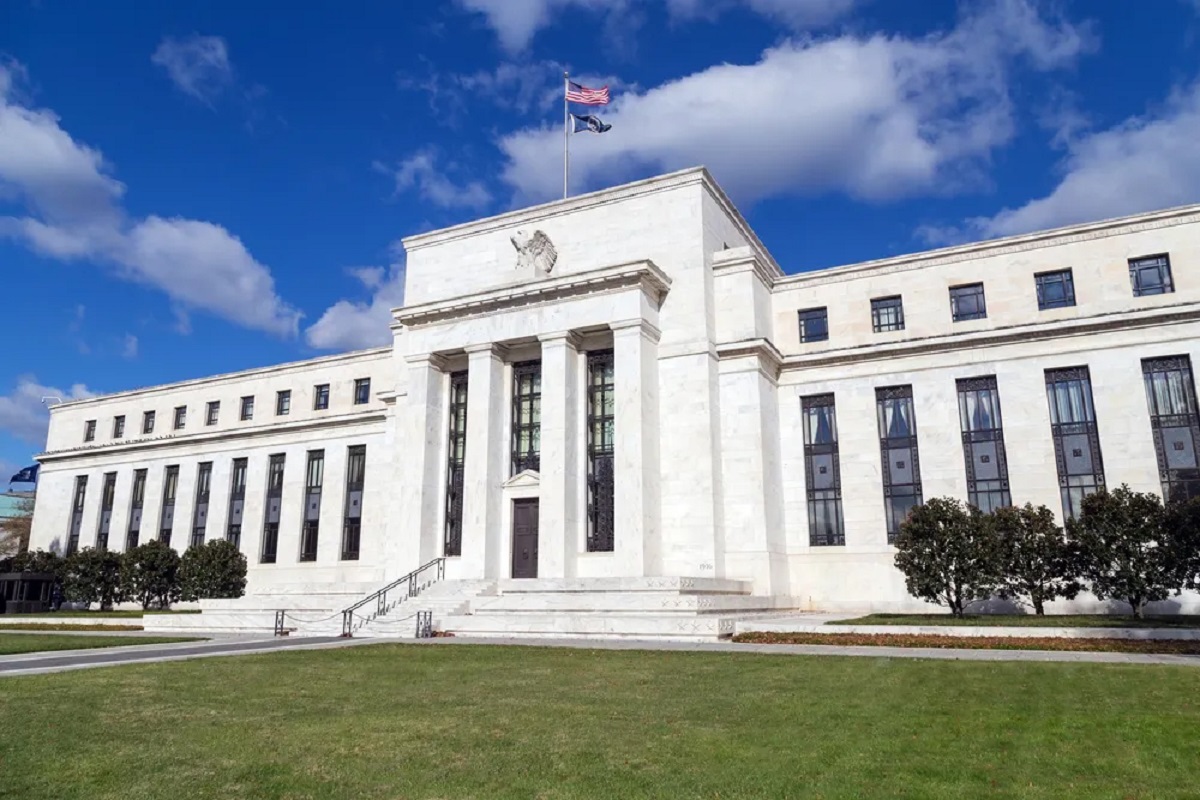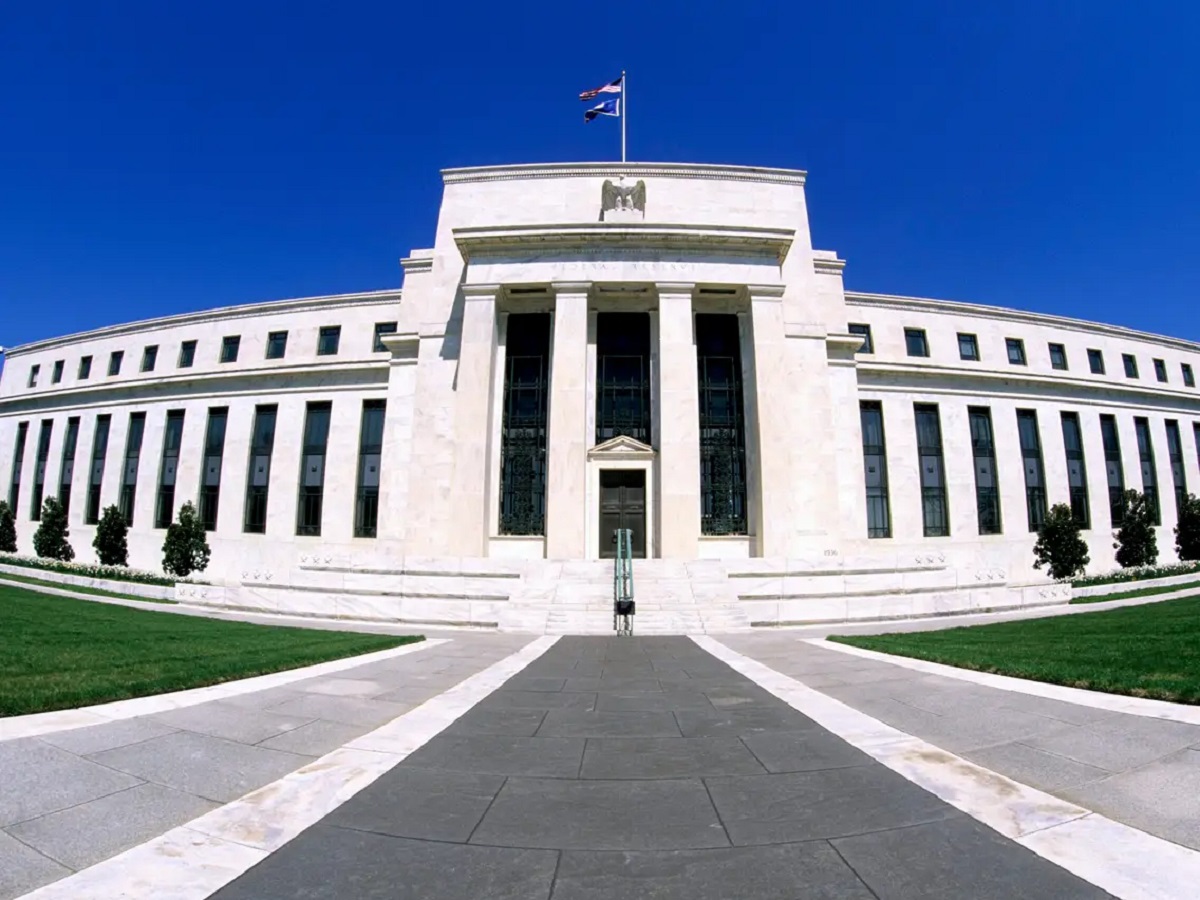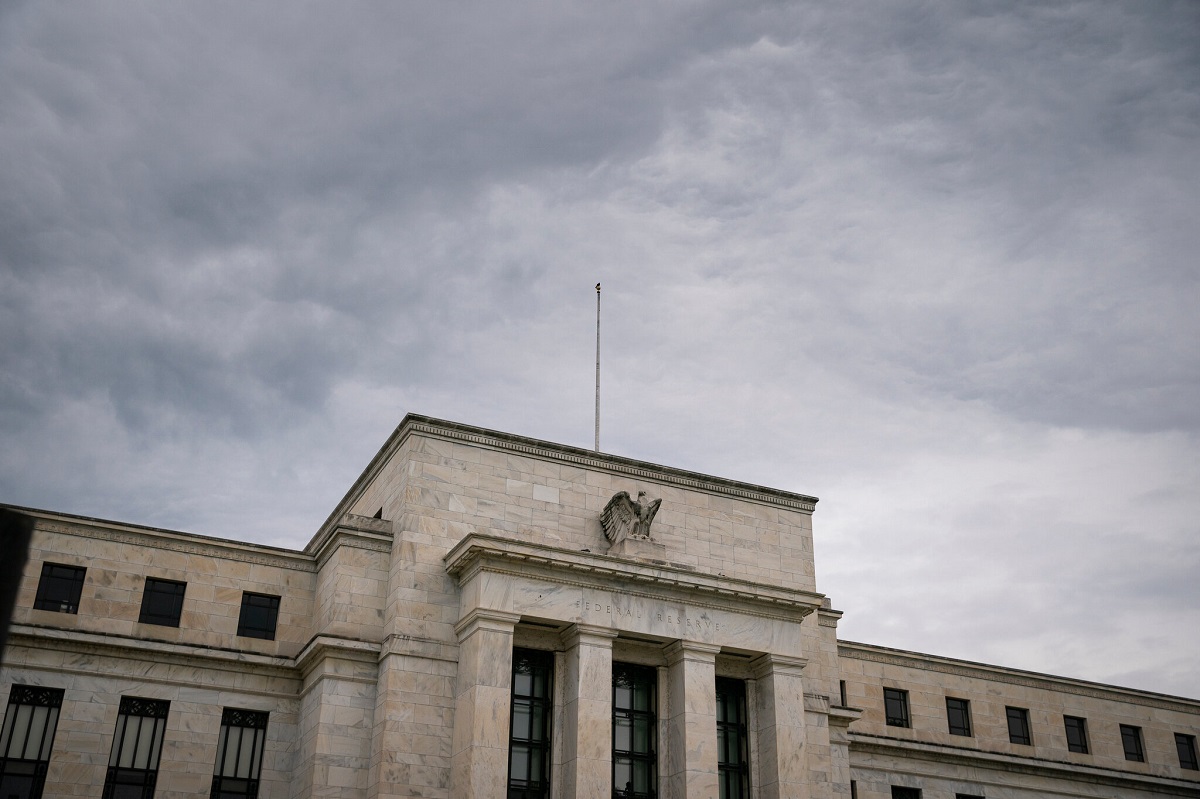Introduction
Welcome to the world of finance, where intricate mechanisms impact the economy at every turn. One of the key pillars of the financial system is the overnight lending rate, a vital component that affects interest rates and influences economic activity. Whether you are a seasoned investor or a curious individual, understanding the overnight lending rate is essential to grasp the intricacies of monetary policy and its impact on financial markets.
The overnight lending rate is a benchmark interest rate that banks charge one another for overnight loans. It serves as a foundation for determining short-term interest rates for consumers, businesses, and other financial institutions. As we delve deeper into this topic, you will gain a comprehensive understanding of its definition, calculation, significance, and the role played by central banks in determining this crucial rate.
Moreover, we will explore historical examples of changes in the overnight lending rate and examine the potential pros and cons associated with altering this rate. By the end of this article, you will not only have a clear understanding of the overnight lending rate but also appreciate its significance in shaping economic conditions.
So, let’s embark on this insightful journey and delve into the world of the overnight lending rate, where financial decisions are made, and economic trends take shape.
Definition of the Overnight Lending Rate
The overnight lending rate refers to the interest rate at which banks and financial institutions borrow funds from each other for a short period, typically overnight. It is an essential component of the money market, playing a significant role in facilitating liquidity in the financial system. The rate serves as a benchmark for other short-term interest rates, including interbank lending rates, commercial paper rates, and adjustable-rate mortgages.
The calculation of the overnight lending rate is based on various factors, primarily the supply and demand dynamics of funds in the money market. At the end of each business day, banks assess their liquidity needs and the excess or shortfall of funds in their reserve accounts. Those with a surplus lend their excess funds to banks in need, facilitating the smooth functioning of the financial system.
The overnight lending rate is a vital indicator of the overall credit conditions prevailing in the market. When the rate is low, it signifies that there is an abundance of available funds, reflecting a healthy credit market. Conversely, a higher overnight lending rate suggests a scarcity of available funds, indicating tighter credit conditions.
Financial institutions utilize the overnight lending rate as a reference for pricing various financial products, such as loans and bonds. For example, a bank lending to a corporate entity might use the overnight lending rate as a base rate, adding a markup to account for credit risk and profit margins. Similarly, bonds and other fixed-income securities might have yields based on the overnight lending rate, adjusting for factors such as maturity and creditworthiness.
The overnight lending rate also has implications for consumers and businesses. Changes in this rate can influence the borrowing costs associated with mortgages, car loans, and credit cards. When the overnight lending rate rises, interest rates on such products often increase, leading to higher borrowing costs for individuals and companies.
Overall, the overnight lending rate serves as a crucial indicator of the prevailing credit conditions and influences the cost of borrowing for various financial products. Understanding this rate is essential for individuals, businesses, and policymakers alike, as it impacts financial decisions, economic activity, and monetary policy.
How the Overnight Lending Rate is Determined
The determination of the overnight lending rate involves a complex interplay of market forces and the actions of central banks. While the specific process may vary across countries, the underlying principles remain relatively consistent. Let’s explore the factors that contribute to the determination of the overnight lending rate.
1. Supply and Demand: The fundamental principle of supply and demand plays a pivotal role in setting the overnight lending rate. When the demand for funds in the money market exceeds the available supply, banks are willing to pay a higher interest rate to borrow. Conversely, when the supply of funds exceeds the demand, banks are willing to lend at a lower interest rate.
2. Central Bank Influence: Central banks, such as the Federal Reserve in the United States or the European Central Bank in the Eurozone, also exert a significant influence on the overnight lending rate. Central banks use various tools to manage the money supply and influence interest rates. By adjusting the target rate or implementing open market operations, central banks can encourage or discourage lending activity and thereby impact the overnight lending rate.
3. Short-Term Money Market Operations: In addition to central bank actions, short-term money market operations also contribute to the determination of the overnight lending rate. These operations involve the buying and selling of government securities or other highly liquid assets, which affects the supply of funds in the money market and ultimately influences the lending rate.
4. Economic Conditions: The prevailing economic conditions, such as inflation, unemployment rates, and overall economic growth, also play a role in determining the overnight lending rate. Strong economic growth or rising inflationary pressures may prompt central banks to raise interest rates to cool down the economy, leading to an increase in the overnight lending rate.
It is important to note that the overnight lending rate is not static and can fluctuate regularly. Banks and financial institutions monitor market conditions, central bank actions, and economic indicators to anticipate changes in the rate. This information helps them adjust their lending activities and manage their liquidity effectively.
The determination of the overnight lending rate is a complex process that involves market dynamics, central bank policies, and economic conditions. By understanding these factors, individuals and businesses can gain insights into the factors influencing borrowing costs and make informed financial decisions.
Important Uses and Impact on the Economy
The overnight lending rate plays a crucial role in the economy, influencing various aspects of financial markets, monetary policy, and economic activity. Let’s explore the important uses and the impact it has on the economy.
1. Monetary Policy: Central banks utilize the overnight lending rate as a powerful tool to implement monetary policy. By adjusting this rate, central banks can influence the cost of borrowing, which in turn affects consumer spending, business investment, and overall economic activity. A higher overnight lending rate can help control inflation, while a lower rate can stimulate economic growth and promote lending.
2. Interest Rates: The overnight lending rate serves as a benchmark for other short-term interest rates. When the overnight lending rate changes, it cascades across the financial system, affecting various interest rates such as interbank lending rates, commercial loan rates, credit card rates, and mortgage rates. These changes have a direct impact on consumers, businesses, and investors, influencing their borrowing costs and spending decisions.
3. Liquidity Management: Financial institutions rely on the overnight lending market to manage their liquidity needs. When banks experience a temporary shortage of funds, they can borrow from other banks in the overnight lending market to meet their obligations. Conversely, banks with excess funds can lend to other banks and earn interest. This interbank lending activity ensures smooth liquidity management, promoting stability in the financial system.
4. Stability in Financial Markets: The overnight lending rate helps maintain stability in financial markets by providing a reliable mechanism for banks to manage their short-term funding needs. It ensures that banks have access to funds to meet their daily operational requirements and fulfill their obligations. Any disruption in the overnight lending market can have severe consequences, leading to liquidity crises and financial instability.
5. Economic Growth and Investment: The overnight lending rate has a direct impact on economic growth and investment. When the overnight lending rate is low, borrowing becomes cheaper, incentivizing businesses and individuals to invest and expand. This, in turn, stimulates economic activity, leading to job creation and increased consumer spending. On the other hand, a higher overnight lending rate can dampen borrowing activity and investment, potentially slowing down economic growth.
6. Foreign Exchange Rates: Changes in the overnight lending rate can also influence foreign exchange rates. When a country’s overnight lending rate is higher than that of other countries, it can attract foreign investors seeking higher returns. This increased demand for the country’s currency can lead to a strengthening of its exchange rate. Conversely, a lower overnight lending rate can make the country’s currency less attractive, potentially resulting in depreciation.
The overnight lending rate has far-reaching implications for the economy, influencing monetary policy, interest rates, liquidity management, financial market stability, economic growth, and foreign exchange rates. Its importance cannot be understated, as it serves as a vital tool for central banks to manage inflation, promote economic activity, and maintain stability in the financial system.
The Role of Central Banks in Setting the Overnight Lending Rate
Central banks play a crucial role in setting the overnight lending rate, exercising significant influence over monetary policy and the overall functioning of the financial system. Understanding the role of central banks in determining this rate provides valuable insights into the broader economic landscape. Let’s explore the key aspects of their role.
1. Monetary Policy Tool: The overnight lending rate serves as a vital tool for central banks to implement monetary policy. By adjusting this rate, central banks can directly influence the cost of borrowing for banks and financial institutions. A higher overnight lending rate can help control inflation by making borrowing more expensive and restraining spending. Conversely, a lower rate can stimulate economic activity by reducing borrowing costs and encouraging lending.
2. Policy Rate Decisions: Central banks make policy rate decisions to set the overnight lending rate based on a complex assessment of economic conditions, including inflation levels, economic growth, employment, and other factors. These decisions are typically made by central bank committees or boards, taking into account various economic indicators, projections, and expert analysis.
3. Open Market Operations: Central banks often use open market operations to influence the overnight lending rate. These operations involve buying or selling government securities or other highly liquid assets to manage the money supply and control interest rates. For example, if a central bank wants to lower the overnight lending rate, it can purchase government securities, injecting liquidity into the system and pushing interest rates lower.
4. Communication and Guidance: Central banks play a crucial role in providing guidance and signaling their intentions regarding the overnight lending rate. Through official statements, speeches, and publications, central bank officials communicate their assessment of economic conditions and their expectations for future policy rate changes. This guidance helps shape market expectations and assists market participants in making informed decisions.
5. Financial System Stability: Central banks monitor and oversee the stability of the financial system, including the overnight lending market. They ensure that banks and financial institutions have access to liquidity and promote the smooth functioning of interbank lending. Central banks may intervene in the overnight lending market to provide liquidity during times of stress, ensuring stability and preventing systemic risks.
6. International Coordination: Central banks also engage in international coordination and cooperation when setting the overnight lending rate. They consider global economic trends, exchange rates, and the actions of other central banks to ensure consistency and minimize disruptions. Collaboration with international counterparts helps maintain stability in the global financial system.
The role of central banks in setting the overnight lending rate is pivotal in guiding monetary policy, maintaining financial stability, and influencing economic conditions. Their decisions and actions impact the cost of borrowing, investment decisions, and overall economic activity, making central banks key drivers in shaping the economic landscape.
Historical Examples and Changes in the Overnight Lending Rate
Throughout history, the overnight lending rate has experienced periods of fluctuation, influenced by economic conditions, policy decisions, and financial market trends. Examining historical examples provides valuable insights into the changes and impact of the overnight lending rate. Let’s explore notable instances of rate changes and their effects.
1. Global Financial Crisis: The global financial crisis of 2008-2009 led to significant changes in the overnight lending rate. Central banks worldwide slashed interest rates in an effort to stimulate lending and revive the economy. For instance, the U.S. Federal Reserve reduced the federal funds rate to near-zero levels, effectively lowering the overnight lending rate. This action aimed to boost liquidity and confidence in the financial system during the crisis.
2. Taper Tantrum: In 2013, concerns over the U.S. Federal Reserve’s potential reduction of its bond-buying program led to a period of volatility in financial markets known as the “taper tantrum.” Investors feared an increase in the overnight lending rate as a result of the tapering of quantitative easing measures. The anticipation of higher rates caused market fluctuations, leading to a temporary increase in borrowing costs for banks and financial institutions.
3. Financial Downturns: During economic downturns, central banks often lower the overnight lending rate to stimulate lending and boost economic activity. For example, during the 2001 recession following the burst of the dot-com bubble, the U.S. Federal Reserve reduced interest rates to historic lows, including the overnight lending rate. These rate cuts aimed to encourage borrowing and investment, supporting economic recovery.
4. Inflationary Pressures: Inflationary pressures can prompt central banks to raise the overnight lending rate to control rising prices and maintain price stability. For instance, during the inflationary period in the 1970s, central banks, including the U.S. Federal Reserve, raised interest rates significantly to curb inflation. These rate hikes increased the overnight lending rate, making borrowing more expensive and reducing spending to help combat inflation.
5. Recovery and Normalization: After an economic downturn, central banks may gradually increase the overnight lending rate as the economy recovers. This process is known as rate normalization. For example, following the global financial crisis, many central banks began raising interest rates to return them to more typical levels. These increases also impacted the overnight lending rate, leading to higher borrowing costs for banks, businesses, and individuals.
It is crucial to note that the impact of changes in the overnight lending rate may not be immediate and can vary across different sectors of the economy. The reaction of financial markets and the real economy to rate changes depends on factors such as market expectations, investor sentiment, and the overall state of the economy.
Examining historical examples of changes in the overnight lending rate provides insights into the role of central banks and the impact on financial markets and the broader economy. By understanding these historical patterns, individuals, businesses, and policymakers can better anticipate and navigate the potential effects of future rate changes.
Pros and Cons of Changing the Overnight Lending Rate
Changing the overnight lending rate can have both positive and negative implications for the economy, financial markets, and various stakeholders. Evaluating the potential pros and cons of adjusting this rate provides a comprehensive understanding of its impact. Let’s explore the advantages and disadvantages of changing the overnight lending rate.
Pros:
1. Economic Stimulus: Lowering the overnight lending rate can stimulate borrowing and investment, boosting economic activity. By reducing borrowing costs, businesses and individuals are more inclined to take loans, leading to increased spending, job creation, and overall economic growth.
2. Flexibility in Monetary Policy: Adjusting the overnight lending rate allows central banks to effectively manage monetary policy. Raising rates can help control inflation and prevent an overheated economy, while lowering rates can stimulate lending and counter economic downturns.
3. Improved Liquidity: Lowering the overnight lending rate can enhance liquidity in the financial system. Banks have increased access to funds, which enables them to fulfill their obligations, maintain stability, and promote lending to individuals and businesses.
4. Enhancing Borrowing Affordability: Decreasing the overnight lending rate reduces borrowing costs, making it more affordable for individuals and businesses to access credit. This can increase consumption and investment, driving economic growth and supporting entrepreneurial activities.
Cons:
1. Inflation Risk: Lowering the overnight lending rate can increase the risk of inflation. When borrowing becomes cheaper, individuals and businesses may take on excessive debt, leading to increased spending and rising prices. Central banks must carefully monitor inflationary pressures to mitigate the risk.
2. Impact on Savers: Lowering the overnight lending rate can adversely affect savers, particularly retirees who rely on interest income from their savings. As rates decline, interest earned on savings accounts, certificates of deposit, and other fixed-income investments also decrease, impacting the income of individuals who rely on such returns.
3. Asset Price Inflation: Decreasing the overnight lending rate can potentially lead to inflated asset prices, such as real estate or the stock market. When borrowing costs are low, investors may seek higher returns in these assets, driving up their prices. This can create financial imbalances and increase the risk of asset bubbles.
4. Reduced Income for Banks: Lower interest rates can lead to reduced profitability for banks. As the spread between borrowing and lending rates narrows, banks’ net interest margin decreases, impacting their overall earnings. This can potentially weaken the banking sector and limit their ability to lend.
It is important to note that the effects of changing the overnight lending rate can differ based on the specific context and prevailing economic conditions. Central banks must carefully consider the balance between stimulating economic growth and managing potential risks when making rate adjustments.
Evaluating the pros and cons of changing the overnight lending rate helps policymakers and market participants understand the potential consequences of such actions. Striking a balance between supporting economic growth and managing risks is crucial for maintaining a stable and sustainable financial system.
Conclusion
The overnight lending rate is a critical component of the financial system, influencing interest rates, monetary policy, and economic activity. Understanding the intricate mechanisms and implications of this rate provides valuable insights into the functioning of financial markets and the broader economy.
Throughout this article, we have explored the definition of the overnight lending rate, its determination, and the role of central banks in setting this crucial benchmark. We have delved into historical examples of rate changes and their impact on financial markets and the economy. Additionally, we have examined the potential pros and cons associated with adjusting the overnight lending rate.
From facilitating liquidity management and serving as a monetary policy tool to influencing borrowing costs and economic growth, the overnight lending rate plays a pivotal role in shaping financial conditions and economic outcomes.
It is important to note that the impacts of changing the overnight lending rate can vary across different stakeholders and economic sectors. Central banks must carefully balance stimulating economic activity, controlling inflation, and managing potential risks when making rate adjustments.
As individuals, businesses, and policymakers navigate the intricacies of the financial world, understanding the overnight lending rate empowers them to make informed decisions, adapt to market conditions, and contribute to economic stability and growth.
By continuously monitoring market dynamics, economic indicators, and central bank actions, individuals and businesses can better anticipate and navigate the potential impact of changes in the overnight lending rate.
In conclusion, the overnight lending rate is a vital tool used by central banks to shape monetary policy, influence interest rates, and foster economic growth. Its role in the financial system cannot be understated, and its impact reverberates throughout the economy, affecting borrowers, savers, investors, and financial institutions. By understanding the complexities of the overnight lending rate, we can better comprehend the dynamics and intricacies of the financial world we live in.

























